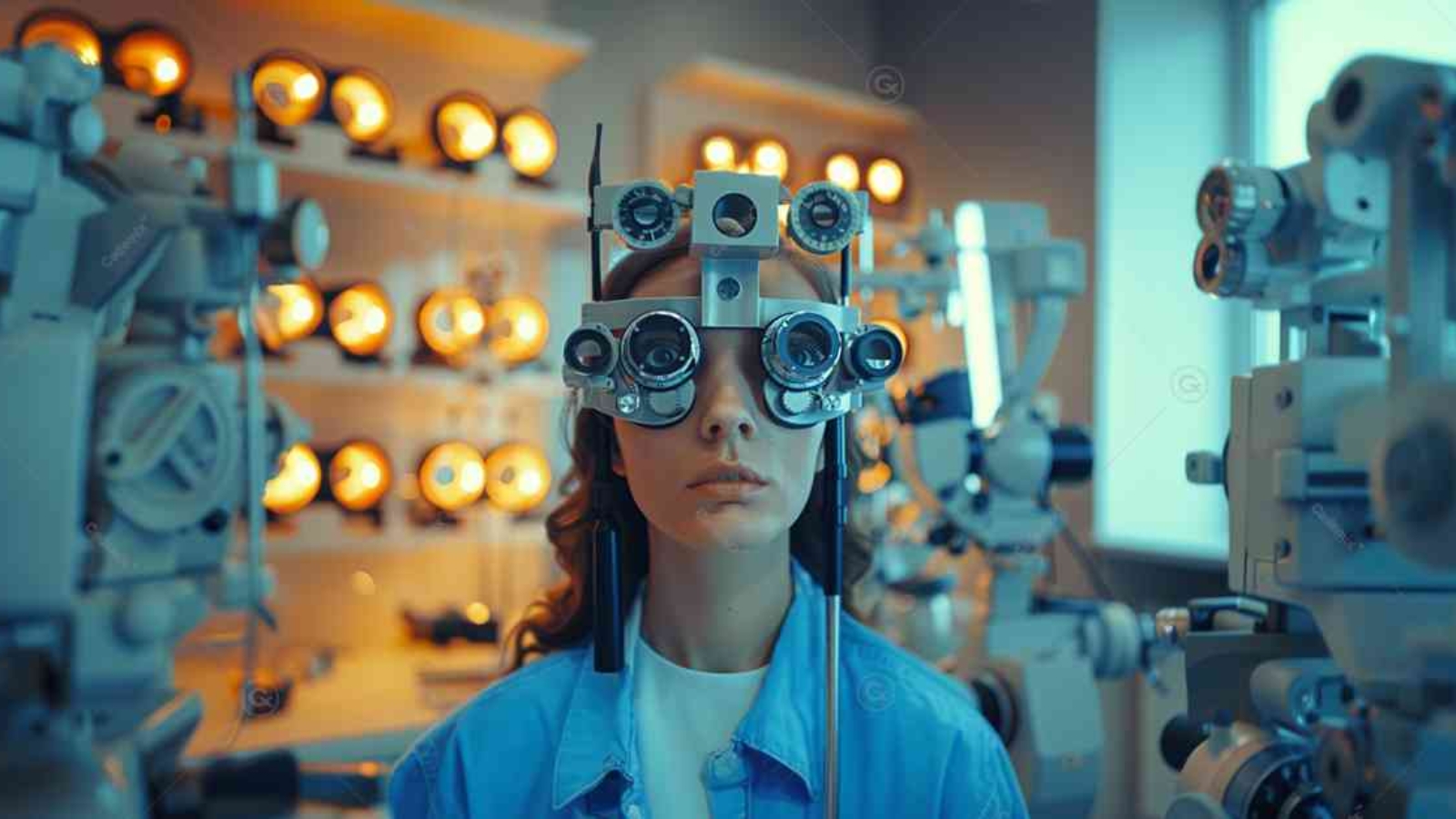Your eyeglass prescription is a critical component of maintaining optimal vision and eye health. This comprehensive guide delves into the details of eyeglass prescriptions, including how they are written, what the numbers mean, and how to choose the right lenses for your needs.
By Jom Johnson
eyeglass prescription, vision correction, eyeglasses, eye exam, optometrist, ophthalmologist, lens types, vision health, prescription glasses, eye care

The Basics of Eyeglass Prescriptions
What Is an Eyeglass Prescription?
An eyeglass prescription is a written order from an eye care professional, such as an optometrist or ophthalmologist, specifying the parameters needed to correct your vision. This document is essential for obtaining the correct lenses to address refractive errors such as nearsightedness, farsightedness, astigmatism, and presbyopia.
The Importance of Regular Eye Exams
Regular eye exams are crucial for maintaining good vision and overall eye health. During these exams, your eye care professional will assess your vision, update your prescription as needed, and check for any signs of eye diseases or other health issues.
Decoding Your Eyeglass Prescription
Understanding the Notation
Eyeglass prescriptions typically include several components, each indicating a specific aspect of your vision correction needs. Here’s a breakdown of the most common elements you’ll find on a prescription:
Sphere (SPH)
The sphere value indicates the strength of the lens required to correct nearsightedness or farsightedness. A negative value (-) signifies myopia (nearsightedness), while a positive value (+) indicates hyperopia (farsightedness).
Cylinder (CYL)
The cylinder value corrects astigmatism, which is an irregular curvature of the cornea or lens causing blurred vision. The cylinder value can be either positive or negative and is always paired with an axis value.
Axis
The axis value, ranging from 0 to 180 degrees, specifies the orientation of the astigmatism correction. It indicates the angle at which the cylindrical power should be applied to correct the irregular curvature.
Add
The add value is used for multifocal lenses and indicates the additional magnifying power needed for near vision, commonly used in bifocals or progressive lenses. This value is always positive.
Prism and Base
Prism correction is used to address binocular vision problems, such as double vision, by aligning the images seen by each eye. The base value specifies the direction of the prism correction (up, down, in, or out).
Sample Eyeglass Prescription
Here’s an example of what an eyeglass prescription might look like:
OD (Right Eye): SPH -2.00 CYL -1.00 AXIS 180 ADD +2.00
OS (Left Eye): SPH -2.50 CYL -0.50 AXIS 170 ADD +2.00

In this prescription:
- The right eye (OD) requires a -2.00 diopter sphere correction, a -1.00 diopter cylinder correction with an axis of 180 degrees, and an additional +2.00 diopters for near vision.
- The left eye (OS) requires a -2.50 diopter sphere correction, a -0.50 diopter cylinder correction with an axis of 170 degrees, and an additional +2.00 diopters for near vision.
Types of Lenses for Eyeglass Prescriptions
Single Vision Lenses
Single vision lenses have the same prescription across the entire lens and are used to correct either nearsightedness, farsightedness, or astigmatism.
Bifocal Lenses
Bifocal lenses have two distinct areas of vision correction: one for distance vision and one for near vision, separated by a visible line.
Progressive Lenses
Progressive lenses offer a smooth transition between multiple vision zones (distance, intermediate, and near) without visible lines, providing a more natural visual experience.
High-Index Lenses
High-index lenses are made from materials that allow the lenses to be thinner and lighter than standard lenses, making them more comfortable for people with stronger prescriptions.
Aspheric Lenses
Aspheric lenses have a more complex surface profile than standard lenses, which reduces distortions and provides a slimmer, more attractive lens.
Photochromic Lenses
Photochromic lenses automatically darken in response to sunlight and return to clear indoors, offering convenience and protection from UV rays.
Polarized Lenses
Polarized lenses reduce glare from reflective surfaces such as water, snow, and glass, making them ideal for outdoor activities.
Blue Light Blocking Lenses
Blue light blocking lenses filter out harmful blue light from digital screens, which can reduce eye strain and improve sleep quality.

Choosing the Right Frames
Frame Materials
Frames come in various materials, each with its own advantages:
- Plastic: Lightweight and available in many colors and styles, but may be less durable.
- Metal: Durable and often hypoallergenic, metal frames are usually more adjustable but can be heavier.
- Titanium: Strong, lightweight, and hypoallergenic, titanium frames are often more expensive but very durable.
- Acetate: A type of plastic that is lightweight and flexible, offering a good balance of durability and comfort.
Frame Shapes
Choosing the right frame shape can enhance your appearance and complement your face shape:
- Round Faces: Angular frames such as rectangular or square shapes can add definition.
- Square Faces: Round or oval frames can soften the angularity of the face.
- Oval Faces: Most frame shapes work well, but choosing frames that are wider than the broadest part of the face can enhance balance.
- Heart-Shaped Faces: Bottom-heavy frames or rimless styles can help balance a wider forehead and narrower chin.
Frame Sizes
Ensuring the correct frame size is essential for comfort and proper vision correction. Consider the following measurements:
- Lens Width: The horizontal width of each lens, usually between 40-60mm.
- Bridge Width: The distance between the lenses, typically between 14-24mm.
- Temple Length: The length of the arm pieces that extend to your ears, generally between 120-150mm.
The Process of Getting an Eyeglass Prescription
Scheduling an Eye Exam
The first step to obtaining an eyeglass prescription is to schedule an eye exam with an eye care professional. During this exam, the optometrist or ophthalmologist will assess your vision and eye health.
Comprehensive Eye Exam Components
A comprehensive eye exam includes several tests to evaluate different aspects of your vision and eye health:
- Visual Acuity Test: Measures how clearly you see at various distances using an eye chart.
- Refraction Assessment: Determines the exact prescription needed for your glasses or contact lenses.
- Slit-Lamp Examination: Allows the doctor to examine the structures of your eyes under high magnification.
- Retinal Examination: Involves dilating your pupils to examine the retina and optic nerve at the back of your eye.
- Intraocular Pressure Measurement: Checks for glaucoma by measuring the pressure inside your eyes.

Discussing Your Prescription and Options
After the exam, your eye care professional will explain your prescription and discuss the best lens options for your vision needs. They may also provide guidance on choosing frames that fit well and complement your style.
Caring for Your Prescription Eyeglasses
Cleaning Your Lenses
Proper cleaning is essential to maintain clear vision and extend the life of your lenses. Use a microfiber cloth and a lens cleaning solution specifically designed for eyeglasses. Avoid using paper towels, tissues, or clothing, as they can scratch the lenses.
Storing Your Glasses
When not wearing your glasses, store them in a protective case to prevent scratches and damage. Avoid placing your glasses lens-side down on surfaces.
Regular Adjustments
Over time, frames can become loose or misaligned. Visit your eye care professional for regular adjustments to ensure a comfortable fit and optimal vision.
Protecting Your Glasses
Be mindful of activities that could damage your glasses. Remove them when playing sports, swimming, or engaging in other vigorous activities, and consider using sports goggles for protection.
Potential Issues with Eyeglass Prescriptions
Adapting to a New Prescription
It may take a few days to a couple of weeks to adjust to a new eyeglass prescription. During this period, you might experience mild discomfort or vision distortions. If these issues persist, consult your eye care professional.
Common Problems and Solutions
- Blurry Vision: If your vision remains blurry with your new glasses, it could be due to an incorrect prescription or improper lens alignment. Return to your eye care professional for an evaluation.
- Headaches: Headaches can occur if your prescription is too strong or too weak. Ensure your prescription is accurate and the lenses are properly fitted.
- Eye Strain: Eye strain may result from improper lens placement or using the wrong type of lens for your needs. Consult with your eye care professional to address these issues.
Innovations in Eyeglass Lenses
Digital Lenses
Digital lenses, also known as free-form lenses, are customized using advanced computer technology to provide sharper vision and reduce distortions. They are ideal for complex prescriptions and high-definition vision.
Anti-Reflective Coatings
Anti-reflective (AR) coatings reduce glare from lights and improve the clarity of your vision, particularly in low-light conditions. They also enhance the appearance of your glasses by reducing visible reflections on the lenses.
UV Protection
Many eyeglass lenses come with built-in UV protection to shield your eyes from harmful ultraviolet rays. This feature is crucial for preventing eye damage and reducing the risk of conditions like cataracts.
Blue Light Filtering
Blue light filtering lenses help reduce exposure to blue light emitted by digital screens, which can
cause eye strain and disrupt sleep patterns. These lenses are beneficial for those who spend extended periods in front of computers or other digital devices.

Conclusion
Understanding your eyeglass prescription is essential for achieving optimal vision and eye health. From decoding the numbers and choosing the right lenses to proper care and addressing potential issues, this comprehensive guide provides all the information you need to make informed decisions about your eyewear. For expert guidance on eyeglass prescriptions and personalized eye care, visit our clinic and explore our Acceleration Program, which includes CV reviews and specialized further education. Contact us today to schedule your appointment and take proactive steps towards preserving your vision.
Explore our Acceleration Program and consultancy services: Cademix Institute of Technology
For more information on eyeglass prescriptions: American Optometric Association
Discover advanced eyeglass options at: Eye Clinic Vienna

